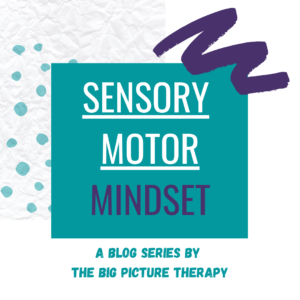
What are reflexes?
You may be aware that there are certain things a newborn baby can do that might seem uncanny. For example, have you noticed how strong an infant’s grip can be? This happens when slight pressure is applied to the palm below their fingers. Another example can be seen when you stroke the side of an infant’s mouth. The result is an open mouth and head turn towards the stroked side.
These are reflexes.
Reflexes are important for infant survival. For example, a baby grasping with its hands would help it hang on to a parent. A head turn and mouth opening response to a touch on the side of its mouth allows a baby to quickly find milk when feeding.
There are many more reflexes that provide the basis for everything we do.

Reflexes: your body's software code
Reflexes provide patterns of behavior for the body. Just like your cell phone has software necessary to perform certain functions, so does your child. These reflexes are written into their genetic software.
“Simply stated a reflex is a neurological arc that has both a specific stimulus and a predictable response or responses” (Brandes, 2015, p. 23).
We often think of a reflex as a quick reaction to something in the environment weather it is the ability to catch something that is falling or kick our leg in a response to a tap of the leg.
Yes, these are reflexes but the ones we talk about for child development will include primitive and primary reflexes.
Primary Reflexes
Primitive reflexes originate in the brainstem and assist with a child's survival (Modrell & Tadi, 2021). This is not a surprise as the brainstem is a place that monitors basic functions such as breathing, sleep, respiration and digestion (see the blog on the hand model brain for a quick rundown of basic brain functions).
Reflexes in child development:
- provide the code for the basic body movements
- are the foundation for complex movement patterns
- will manifest differently during different stages of a child’s life
- assist in protective and survival responses
- are a reaction to sensory stimulation
- are involuntary and not under conscious control (Svetlana Masgutova Educational Institute, 2015)
A majority of these reflexes develop when the child is still in the womb and between 9-12 weeks old. In a typical child’s development, by the time the child reaches 2 years of age, the majority of these reflexes move to the background.
Continuing the software analogy, a child’s “operating system” is designed to regularly update itself with new and increasingly more complex patterns that correspond to its age. You would not expect a 10-year-old to respond the same way to reflex testing as an infant would. This may mean that a reflex never took the backseat to more advanced patterns and therefore may be hindering the older child’s natural skill progression.
Conversely, if an earlier reflex never activated correctly, then you will also see difficulties with skill progression. This can happen if a reflex is “hypo” active or dysfunctional in expression.
Why do reflexes matter for older children?
Let’s take the example of the hand grasp reflex. This reflex is a flexion of fingers stimulated by the touch to the palm of an infant’s hand (under the fingers). This response is typically active in children aged under 4 months. (1) (Marques-de-Moraes, 2017).
Dr Svetlana Masgutova, a pioneer in the field of reflex research and the MNRI program, argues that many of these reflexes help set the foundation for all other more complex skills needed in everyday life.
For instance, the hand grasp reflex serves in the background even after the child has completed 4 months of age. The reflex allows for the natural ability to grab hold of objects for stability when first learning to walk. The hand grasp reflex also allows children as well as adults to quickly grab on to a handrail when we lose balance on a subway or a bus.
Dr. Masgutova’s teachings point to the importance of developing an appropriate fisted hand grasp before expecting children to write with more mature writing patterns. A secure grasp is foundational to physical confidence, because children start to walk while holding on to objects for support.

I have seen the importance of this reflex when working with a child in preschool. In addition to a weak grasp, he would be distressed with many activities such as climbing a small ladder. Also, I love giving kids rides on a plastic sled where they hold onto a bar while being pulled. I noticed he could not hold on.
In an effort to strengthen the hand grasp reflex, we developed a game he enjoyed. We placed him in a fabric swing and then I had him hold tight on to my index and middle fingers with his hands (his left hand holding onto my left index and middle fingers while his right hand holding to my right index and middle fingers). I then slowly pulled him back till he let go and swung the opposite direction.
After a few sessions of working on his hands grasp reflex with this activity, I noticed visible progress. He became more adventurous with getting on various swings, which he had never approached before without encouragement.
His mother just sent a video of him on a swing. She said that he had never gotten on the swings himself and was obviously very happy.
These days, he is also evolving his grasp to mature patterns when holding crayons or markers.
Many of the exercises and games from The Big Picture Therapy use reflex integration techniques. Visit our Facebook page for more activity inspiration. Stay tuned for blogs discussing the link between poorly functioning reflexes and academic difficulties.
References:
Brandes, B. (2015). Primitive Reflexes. In The Symphony of reflexes: Interventions for human Development, autism, ADHD, CP, and other Neurological DISORDERS: Introducing quantum brain boost (p. 23). essay, Quantum Reflex Integration, Inc.
Marques-de-Moraes MV, Dionisio J, Tan U, Tudella E (2017) Palmar Grasp Reflex in Human Newborns. Pediatr Ther 7: 309. doi: 10.4172/2161-0665.1000309
Modrell AK, Tadi P. Primitive Reflexes. [Updated 2021 Mar 21]. In: StatPearls [Internet]. Treasure Island (FL): StatPearls Publishing; 2021 Jan-. Available from: https://www.ncbi.nlm.nih.gov/books/NBK554606/
Svetlana Masgutova Educational Institute. (2015). Reflexes: Portal to Neurodevelopment and Learning. Svetlana Masgutova Educational Institute & reg, LLC.

